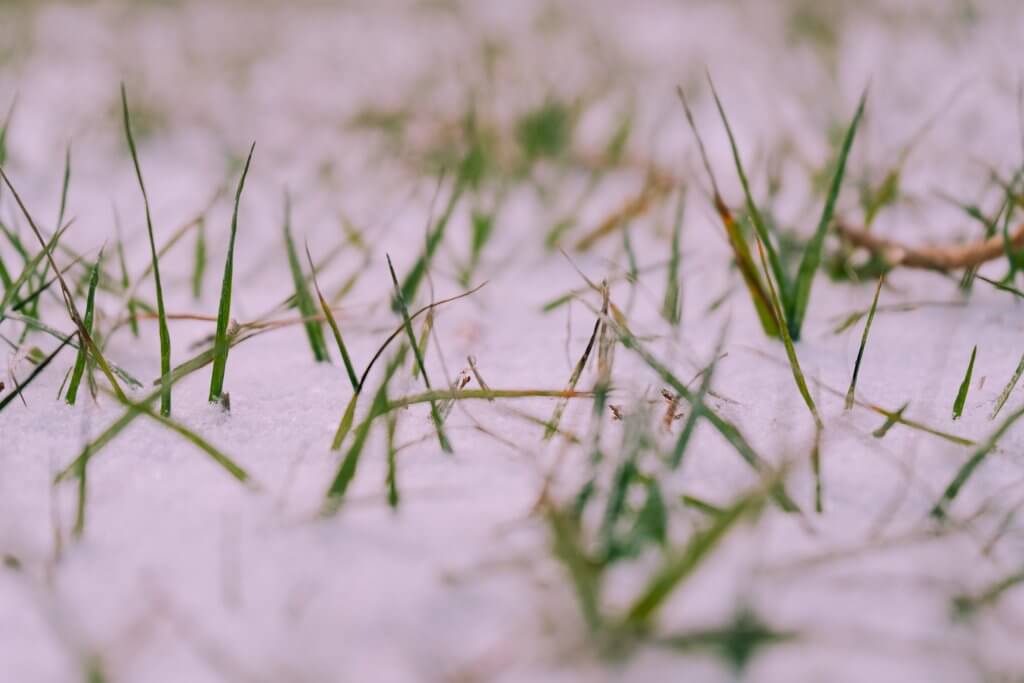North Carolina is no stranger to snow and ice. Even if you haven’t dealt with any yet this season, it’s likely only a matter of time before one or the other takes over your lawn. To ensure your lawn’s health through this time, here’s what you need to know and do to minimize damages.
Preparation Is Key
The heavy, wet snow that’s associated with our cold weather can do some damage. Before you get it or ice (or get them again), these steps can help ensure your lawn stays healthy:
- Ensure your lawn has good drainage: Placing compost, mulch and other organic matter wherever water likes to pool on your lawn can assist its drainage and deicing process. Regrading (or leveling out) your lawn can also help, though this can be a challenge to get right.
- Opt for deicing methods that won’t harm your lawn: Salt-based options can actually seep into the soil as snow and ice melt and cause damage. If you feel strongly about using salt-based products, try to soak your soil before using them. Otherwise, try to opt for alternative products that do the same thing without salt.
- Remove any natural debris that’s still on your lawn: Any leaves, grass clippings and more that are still present can get trapped under snow and ice and contribute to lawn disease, like snow mold.
- Use the right methods to prevent damage to trees, like pruning and wrapping their branches.
Take the Right Actions When They Arrive
When snow or ice does strike, be sure to:
- Take care when shoveling: You never want to damage your grass and/or its roots in the process. You should also be careful when blowing or pushing snow, as any new layers formed by doing this can be slower to melt and more likely to freeze if they are densely packed.
- Keep your gutters and roof snow-free: Doing this within reason (it’s never worth putting yourself in danger), ensures that snow won’t fall off your house and damage your lawn.
- Leave any snow that’s really frozen: Let nature take its course, and chances are, it will melt and your lawn will recover just fine.
- Try to avoid stepping on it: Your footsteps can potentially smother your lawn further or cause any ice crystals in the grass blades to destroy them from the inside out.
Put Your Lawn on a Path to Recovery
Doing the following can assist the natural recovery process of your lawn:
- Assess immediate damage: Slight damages, like discoloration or desiccation, will likely recover on their own. For larger ones/signs of disease, putting your lawn on the right maintenance plan can aid its recovery tremendously.
- Deal with any leftover salt: Spraying and deep-watering your lawn in early spring can help flush out any remaining salt (whether you opted for a salt-based deicer or think some still could have made its way into your lawn).
- Apply nitrogen-based fertilizers: Doing this in the fall for a cool-season lawn and spring for a warm-season lawn can help out its ability to deice in the future.
Help Your Lawn Survive Ice and Snow With Fairway Green
While it’s never ideal, the good news is that snow and ice are often only temporary setbacks for your lawn’s well-being. With added help from Fairway Green, you can make sure that your lawn is ready and able for anything the seasons throw at it. Get started with a free lawn estimate today.

